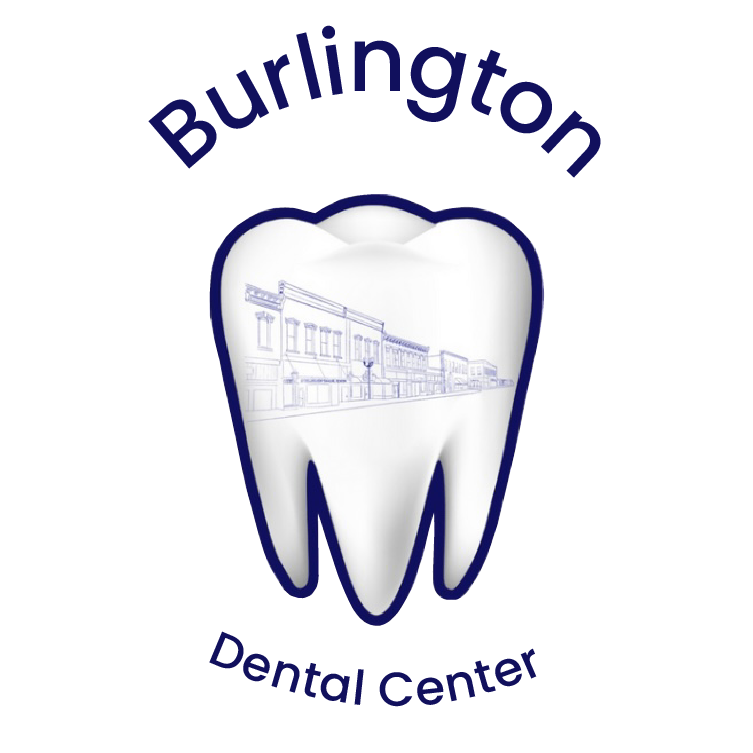In the field of dentistry, there are various procedures available to address different dental issues. When it comes to treating pulpal infections or injuries, two common techniques used by dentists are pulpotomy and pulpal debridement.
Understanding the differences between these procedures is crucial in determining the most appropriate treatment approach for each individual patient.
Choosing Between Pulpotomy and Pulpal Debridement
Deciding between pulpotomy and pulpal debridement depends on various factors, including the patient's dental condition and the dentist's professional judgment.
Factors to Consider
The extent of pulp involvement, the tooth's condition, and the patient's overall oral health are crucial factors to consider when determining the appropriate treatment option.
Role of Patient's Condition
For primary teeth with reversible pulpitis or limited decay, pulpotomy may be the treatment of choice. However, if the dental pulp is irreversibly damaged, pulpal debridement may be necessary to fully address the infection or necrosis.
Dentist's Recommendation and Expertise
Ultimately, the dentist's recommendation and expertise play a significant role in choosing between the two procedures. Dentists will carefully evaluate the patient's condition and make an informed decision based on their professional experience and the best interests of the patient.
Understanding Pulpotomy
Pulpotomy is a dental procedure that involves the removal of the inflamed or infected portion of the dental pulp. It is primarily performed on primary teeth (also known as baby teeth) when the pulp tissue is affected by decay or trauma. The main purpose of pulpotomy is to preserve the vitality of the remaining healthy pulp tissue and promote the natural healing process of the tooth.
Definition and Purpose of Pulpotomy
Pulpotomy is a conservative treatment option designed to remove the affected coronal pulp tissue while attempting to maintain the vitality of the remaining healthy radicular pulp. By doing so, it allows for the development and eruption of the successor tooth in a healthy environment.
When a primary tooth is affected by decay or trauma, the dental pulp, which contains nerves, blood vessels, and connective tissue, can become inflamed or infected. If left untreated, this can lead to severe pain, abscess formation, and potential damage to the permanent tooth developing underneath. Pulpotomy aims to remove the affected portion of the pulp, eliminating the source of infection and preserving the tooth's structure.
During pulpotomy, the dentist carefully removes the inflamed or infected pulp tissue from the crown portion of the tooth. This is usually done using specialized dental instruments, such as a high-speed dental drill or a laser. The remaining healthy radicular pulp, located in the root canal, is then medicated with a suitable material to promote healing and prevent further infection. This material may include a medicated paste containing ingredients like formocresol or mineral trioxide aggregate (MTA).
By removing the diseased pulp tissue and medicating the remaining healthy pulp, pulpotomy allows the tooth to heal and continue its normal development. This is especially important in primary teeth, as they play a crucial role in speech development, proper chewing, and maintaining space for permanent teeth.
The Procedure of Pulpotomy
The pulpotomy procedure involves several steps. First, the dentist will administer local anesthesia to ensure the comfort of the patient. This helps numb the area being treated, reducing any potential pain or discomfort during the procedure.
Next, the affected area is isolated with the help of a rubber dam or any other suitable method to prevent contamination. This isolation technique ensures that saliva and other oral fluids do not interfere with the treatment process, maintaining a clean and sterile environment.
Once isolated, the dentist carefully removes the decayed or injured portion of the pulp using specialized dental instruments. This step is crucial in eliminating the source of infection and preventing its spread to the surrounding tissues.
After removing the affected pulp tissue, the remaining healthy pulp is medicated with a suitable material. This medication helps promote healing and prevent further infection. The choice of medication may vary depending on the dentist's preference and the specific needs of the patient.
Finally, a filling material is placed to seal the area and restore the tooth's functionality. This filling material may include dental cement, composite resin, or stainless steel crowns, depending on the extent of the tooth's decay and the dentist's recommendation.
Potential Risks and Complications of Pulpotomy
While pulpotomy is a relatively safe procedure, like any medical intervention, it does carry some risks and potential complications. These can include post-treatment sensitivity, recurring infection, and the possibility of the tooth requiring extraction in the future. However, these risks are rare and can be minimized with proper oral hygiene practices and regular dental check-ups.
Post-treatment sensitivity is a common occurrence after pulpotomy. The tooth may feel sensitive to hot or cold temperatures for a short period. This sensitivity usually subsides within a few days or weeks as the tooth heals. Over-the-counter pain relievers or desensitizing toothpaste can help alleviate any discomfort during this time.
In some cases, the infection may recur after pulpotomy. This can happen if all the infected tissue was not completely removed during the procedure or if the tooth is exposed to new sources of bacteria. Regular dental check-ups and maintaining good oral hygiene can help detect and address any recurring infections promptly.
In rare cases, the tooth may not respond favorably to pulpotomy, and extraction may be necessary. This can occur if the infection is too severe or if the tooth does not heal properly. However, with proper care and regular dental visits, the success rate of pulpotomy is high, and extraction is usually a last resort.
It is important to note that pulpotomy is a specialized dental procedure that should only be performed by a qualified dentist. If you suspect that you or your child may require pulpotomy, it is essential to seek professional dental advice to determine the best course of treatment.
Delving into Pulpal Debridement
Pulpal debridement is a dental procedure that involves the removal of infected or necrotic pulp tissue from the root canals of a tooth. It is typically performed when the dental pulp is irreversibly damaged, showing signs of irreversible pulpitis or pulp necrosis. Pulpal debridement aims to eliminate the source of infection within the tooth and facilitate the healing process.
What is Pulpal Debridement?
Pulpal debridement is a meticulous process of cleaning and shaping the root canals. It involves the precise removal of infected or necrotic tissue, debris, and bacteria from the root canal system, effectively disinfecting the area. This ensures that the tooth is free from any potential sources of infection and allows for eventual root canal filling and restoration.
The Process of Pulpal Debridement
The pulpal debridement procedure typically begins with the dentist administering local anesthesia to numb the area and ensure patient comfort. Once the tooth is isolated, an opening is made to access the root canal system. The dentist then uses specialized instruments to carefully clean and shape the canals, removing any infected or necrotic tissue. Throughout the process, the root canals are irrigated with antibacterial solutions to disinfect the area thoroughly. To complete the treatment, the canals are filled and sealed, preventing further infection.
Possible Side Effects and Risks of Pulpal Debridement
Although pulpal debridement is generally considered safe, there are potential risks and side effects associated with the procedure. These may include post-treatment sensitivity or discomfort, temporary discoloration of the tooth, or the need for further dental interventions, such as root canal retreatment. However, it is important to note that these risks are rare and can be mitigated by discussing concerns with the dentist and following proper post-treatment care instructions.
Key Differences Between Pulpotomy and Pulpal Debridement
While pulpotomy and pulpal debridement share the goal of preserving the tooth, there are notable differences between these two dental procedures.
Differences in Procedure
Pulpotomy focuses on removing the affected coronal pulp tissue, while pulpal debridement involves cleaning and shaping the entire root canal system to remove infected or necrotic tissue.
Comparing Risks and Complications
Both procedures have their own set of risks and potential complications. Pulpotomy carries the risk of recurrent infection and the possibility of future extraction, while pulpal debridement may lead to post-treatment discomfort or the need for additional endodontic treatment.
Effectiveness and Success Rates
When it comes to success rates, pulpotomy has been proven to be highly effective in saving primary teeth with diseased pulp tissue. Pulpal debridement, on the other hand, is typically performed on permanent teeth and has a higher success rate in relieving pain and resolving root canal infections.
Final Thoughts
In conclusion, pulpotomy and pulpal debridement are both valuable dental procedures used to treat various conditions affecting the dental pulp. Understanding the differences between these two techniques is essential in making the most appropriate treatment selection. By seeking professional advice and weighing the factors discussed, patients can ensure optimal dental health and prolong the longevity of their teeth.
FAQs
What is a pulpal debridement?
A pulpal debridement refers to the removal of infected or inflamed pulp tissue from the pulp chamber of a tooth, especially when the tooth is too inflamed and painful to conduct a complete root canal treatment. This procedure is often done as an emergency measure to alleviate severe tooth pain. During pulpal debridement, the dentist will remove the affected tissue, disinfect the area, and often place a temporary filling until a more definitive treatment, like a root canal, can be performed.
What is the difference between pulpotomy and pulp?
"Pulp" and "pulpotomy" refer to two different concepts in dentistry:
Pulp: This is the innermost soft tissue part of a tooth. It contains blood vessels, nerves, and connective tissues. The pulp provides nourishment to the tooth and responds to external stimuli, like changes in temperature.
Pulpotomy: This is a dental procedure where the coronal (or top) portion of the dental pulp is removed, usually to treat a tooth that has a pulp infection or is decayed. The goal is to preserve the vitality of the remaining pulp tissue and prevent further infection.
What are the two types of pulpotomy?
The two primary types of pulpotomy are:
Vital Pulpotomy: This procedure is often done on primary (baby) teeth. It involves removing only the affected or decayed portion of the pulp, while leaving the healthy, living pulp tissue intact. A medicament, such as ferric sulfate or formocresol, may be applied to the remaining pulp to preserve its vitality and prevent bacterial growth.
Non-vital (or Devitalization) Pulpotomy: In this procedure, the entire pulp chamber's contents are removed due to irreversible damage or infection. After removing the pulp, the chamber is often treated with a medicament to prevent bacterial growth before being sealed.
What is the alternative to pulpotomy?
The primary alternative to pulpotomy is a pulpectomy. A pulpectomy involves the complete removal of all pulp tissue from both the crown and root of the tooth. It is essentially a root canal procedure. It's done when the pulp infection or damage is too extensive, and preserving any of the pulp is not feasible. After the pulp is removed during a pulpectomy, the empty space (canals) is cleaned, disinfected, and then filled with a biocompatible material to seal the tooth and prevent future infections.
* Though the author of this post is a licensed dentist in the state of Kansas, this information is provided for informational and educational purposes only. Please use your best judgment and contact emergency medical services in the event of an emergency.


